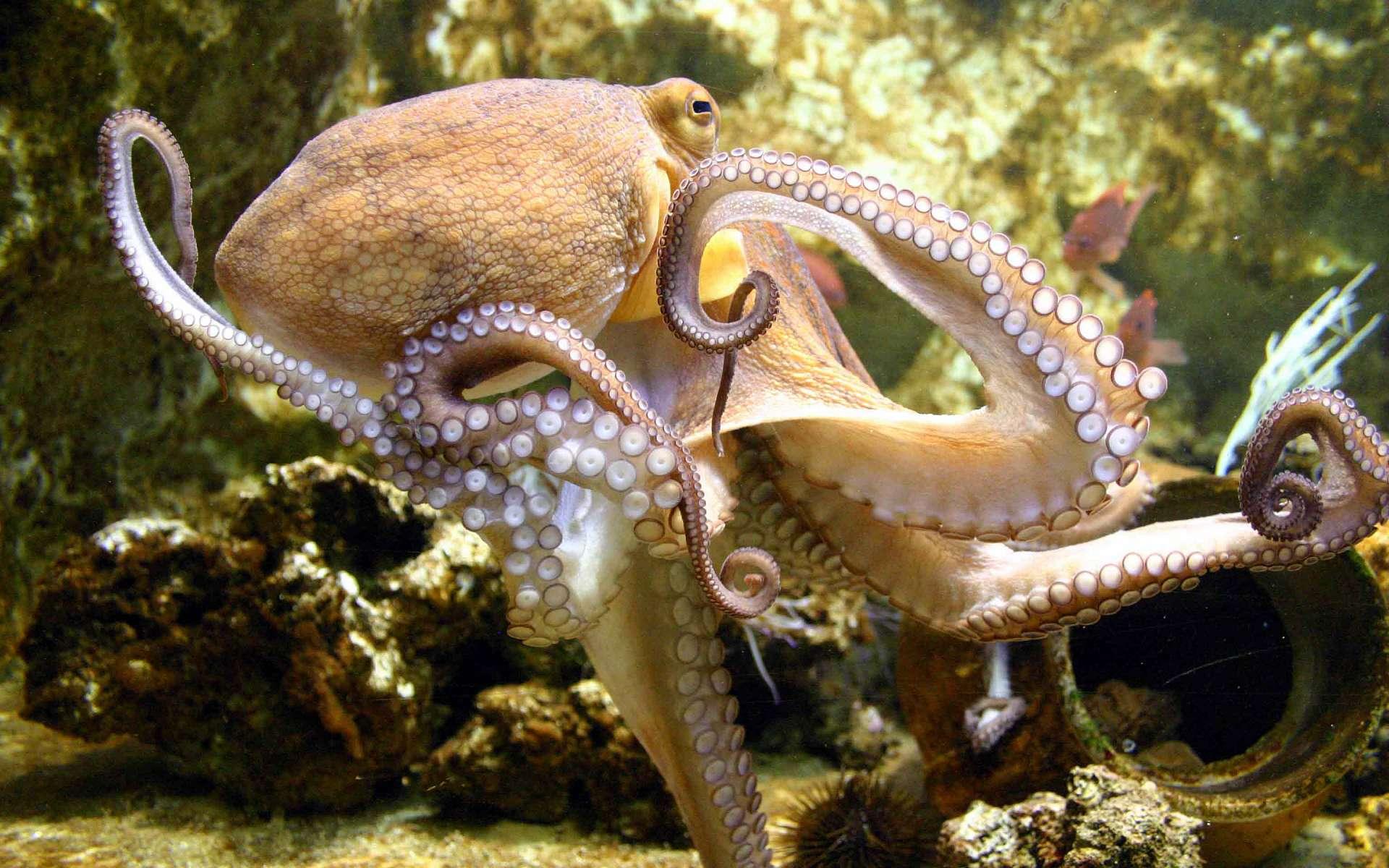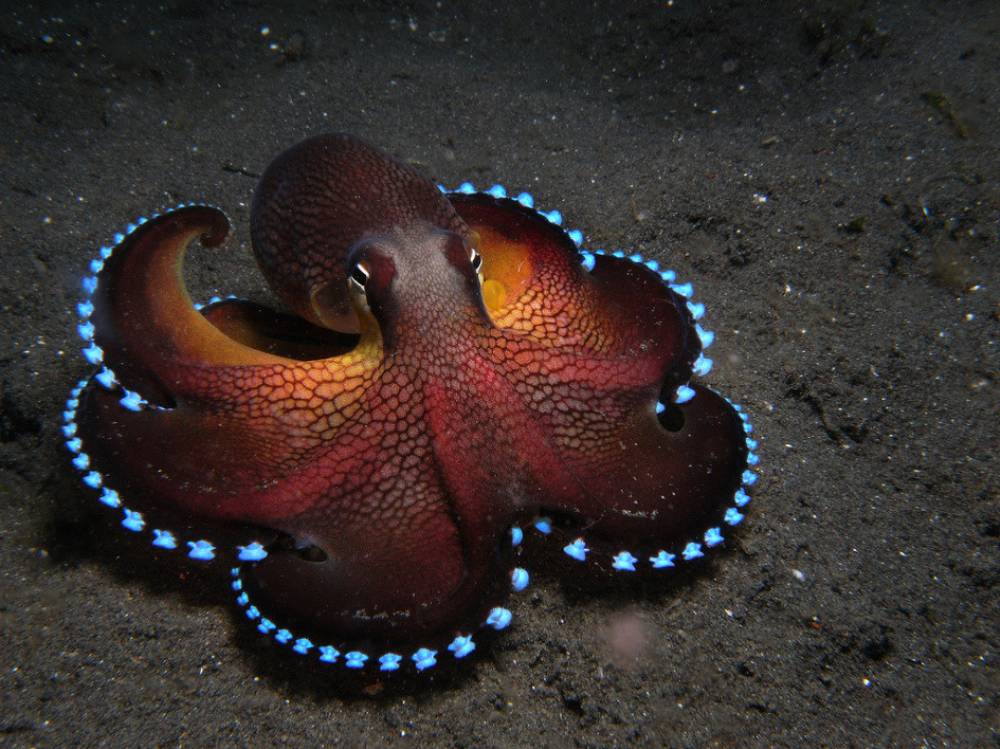
Octopus
THE DEVILFISH.
THE ill-shapen monster in the cut is well called a devil-fish, not only on account of its hideous appearance, but by reason of the many accounts given by sailors of their terrible attacks on the "toilers of the sea." Its more proper name, however, is the Octopus, meaning the eight-footed; though it is also known by the names of Cuttlefish, Squid, and others. With the picture before you; it will hardly be necessary to describe its appearance, and indeed it would be difficult to attempt it. Perhaps the most striking feature is its great, staring eyes, which are said to be larger than those of any known animal. Those of one captured on the Atlantic coast measured eight inches in diameter. Its arms, of which you will notice there are eight, are furnished with little round fleshy cups with shell-like edges; these fasten to any object coming within their reach, and there suck and cling so tightly that no victim can escape the monster's clasp until its arms are cut off. Some kinds have besides these arms long feelers called tentacles, about three times the length of the body of the fish. The mouth is of extraordinary size, and furnished with several rows of teeth. It is not seen in the picture, but is situated in the center of the body, and the food is brought to it by the thick muscular arms. Its mode of traveling is very curious, and very different from what one would expect from its appearance. Instead of using its arms to help itself along, it breathes in large quantities of water through its gills, and then by a sudden and tremendous exertion of the muscles it spurts it out of a tube near the head; this course drives the unwieldy monster backward like an arrow through the water, dragging its arms and tentacles behind.
These creatures are usually found in deep water, sometimes floating on the surface, but often hidden among the rocks on the bottom. Their color is usually blackish above, and white beneath, though it will readily change to appear like the objects around them. When on the watch for prey, they lie with arms at rest, and tentacles floating about, having much the appearance of seaweeds. But let an unwary fish draw near, hoping to obtain food from the treacherous stalk, and it will instantly be dragged down within reach of the terrible arms, which fold themselves about it, and draw it to the central mouth—and all is over.
It is difficult to determine the size of these creatures, because, living as they do in deep water, it is impossible to capture or study the larger specimens. Many marvelous stories are told by sailors of their lying upon the surface of the ocean, presenting the appearance of small islands, and of their attacking small ships, encircling their arms around the masts, and dragging the vessel with all its crew to the depths below. But how much credit can be given to these tales is not known with certainty. Some of the smaller specimens, however, have been driven ashore along the Atlantic coast, one of which, taken near the entrance of Delaware Bay, in 1823, was so heavy as to require three pair of oxen, a horse, and several men, to bring it on shore. It was estimated to weigh about five tons, and measured seventeen and one-fourth feet long, and eighteen feet wide. The mouth was two and three-fourths feet wide, and the distance between the eyes was a little over four feet.
Many naturalists contend that the devil-fish, though powerful and hideous, is a timid and harmless creature, avoiding rather than attacking man; but when attacked, defending itself with vigor.
During gales of wind or in places where there is a strong current, the fishermen drive them into shallow water, where they are unable to extricate themselves, and large quantities of oil are then taken from their livers. Thus we see that all the creation of God can in some way, great or small, be made to serve the purpose of man.
C. H. G.
.jpg?timestamp=1390004255219)
